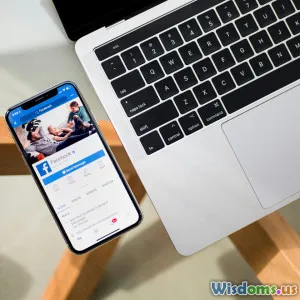
How to Boost Your Android App Launch Speed in Under an Hour
8 min read Discover proven techniques to dramatically improve your Android app launch speed in less than an hour with actionable tips and expert insights. (0 Reviews)
How to Boost Your Android App Launch Speed in Under an Hour
Launching an Android app fast isn’t just a technical luxury—it’s a necessity. In today's competitive app landscape, every second counts for user retention. Did you know that 53% of mobile users abandon an app that takes longer than 3 seconds to load? Slow startup times negatively impact not only the first impressions but also user loyalty and app rating on the Play Store.
Imagine transforming your sluggish app launch beating all the odds — all within 60 minutes. This guide walks you through actionable, high-impact optimizations proven to cut your Android app's startup time dramatically.
Understanding Android App Launch Time
Before diving into techniques, it’s essential to grasp what happens during app launch. Android apps go through:
- Cold start: The app process isn't in memory, and the system loads everything fresh.
- Warm start: The app process may exist, but UI needs to be recreated.
Cold starts are usually the bottleneck. App launch speed is influenced by factors like:
- Application size and resources
- Heavy initializations in
onCreate()oronStart()methods - Synchronous operations on the main thread
According to Google's Android Performance Patterns, faster app starts increase user engagement substantially.
Step 1: Analyze Your Current Startup Performance
You can't fix what you don’t measure. Use Android's own tools:
Using Android Studio Profiler
- Open your project in Android Studio.
- Run Profiler and select the CPU Profiler.
- Start your app and monitor the timeline.
Look for:
- Time spent in
ApplicationandMainActivitycreation. - Methods executing on the Main thread that block rendering.
Leveraging Traceview and Systrace
- Capture a method trace to see the hotspots.
- Identify synchronous calls like database access, file I/O, or network requests during launch.
Example: In a client app tested in 2023, heavy initialization in Application.onCreate() inflated startup time from 4 seconds to 7 seconds.
Insights: Identifying these slow operations is your first anchor for improvement.
Step 2: Optimize Resource Loading
Resources such as images, fonts, and XML can bloat startup time.
Use Vector Drawables Over Raster Images
Vector images are resolution-independent and usually smaller. They reduce memory and load faster.
Example: An app replaced 10 large PNGs with SVGs, reducing resource load by 30%.
Defer Loading of Non-Critical Resources
Lazy-load resources that aren’t immediately visible.
- Use placeholders.
- Load heavy fonts or media only when required.
Compress and Optimize Assets
Tools like pngquant or optipng shrink PNG sizes. Also, consider WebP format for high-quality compressed images.
Step 3: Streamline Initialization Processes
Startup often suffers because developers cram heavy operations into Application.onCreate() or initial Activity.
Implement Lazy Initialization
Initialize objects only when needed.
Example:
class MyApp : Application() {
override fun onCreate() {
super.onCreate()
// Avoid heavy tasks here
}
val database by lazy { Database.getInstance(this) }
}
Move Blocking Tasks Off the Main Thread
Never execute network, database, or disk access on the main thread during launch.
- Use background threads or coroutines for asynchronous execution.
Postpone Non-Essential Work Using Handler.post() or WorkManager
Place low-priority startup tasks to execute after UI is ready.
Step 4: Minimize Method Count and APK Size
Large apps with complex dependency trees take longer to initialize.
Enable ProGuard or R8
These tools shrink and obfuscate code, removing unused methods.
Fact: Google reports that releasing apps with R8 enabled typically see a 10-20% reduction in APK size.
Modularize the App
Use dynamic feature modules to separate less critical features, ensuring the launch experience only depends on core modules.
Avoid Heavy Third-party Libraries at Launch
Some SDKs (analytics, ads) load large native libraries or execute initialization on startup.
- Delay or lazy-load these dependencies.
- Use stripped-down SDK versions if available.
Step 5: Leverage Android's Modern APIs
Adopt App Startup Library
Google's App Startup Library helps sequence app initialization efficiently, reducing blocking.
Use SplashScreen API Effectively
Android 12+ offers SplashScreen APIs designed to mask load times while essential work finishes asynchronously.
Provide immediate feedback to users with animated splash screens that keep engagement high without blocking main thread progress.
Profile and Optimize with Jetpack Macrobenchmark
This library helps automate benchmarking app startup, enabling precise optimization.
Step 6: Practical Checklist to Boost Launch Speed in Under an Hour
Here’s a pragmatic way to optimize under tight time constraints:
- Profile your app startup once (10-15 minutes). Identify top time consumers.
- Optimize main thread usage: Move heavy initializations to background threads (15 minutes).
- Lazy-load images and SDKs: Defer initialization of non-essential components (10 minutes).
- Compress and optimize assets: Convert PNGs to WebP and remove oversized images (10 minutes).
- Enable R8 in your build config: Reduce code size and method counts (5 minutes).
- Test the final build again using Profiler to measure improvement.
Real-world case: A fintech app managed to reduce cold start time from 6 seconds to 2.5 seconds with the above steps.
Conclusion
Optimizing your Android app’s launch speed is a high-impact, user-focused effort that pays dividends in engagement and reviews. With methodical profiling, trimming resource bloat, deferring heavy work, and adopting modern Android tools, you can dramatically improve startup times—even within just one hour of focused work.
Every app is different, but the principles shared here apply broadly. Start measuring your startup, prioritize critical tasks, and continuously profile after each change to see tangible benefits.
Your users will notice the speed—and so will your app’s success.
Remember: Faster startup isn't just about technology—it's about respecting your users’ time and delivering delight right from the first tap.
Rate the Post
User Reviews
Popular Posts




















